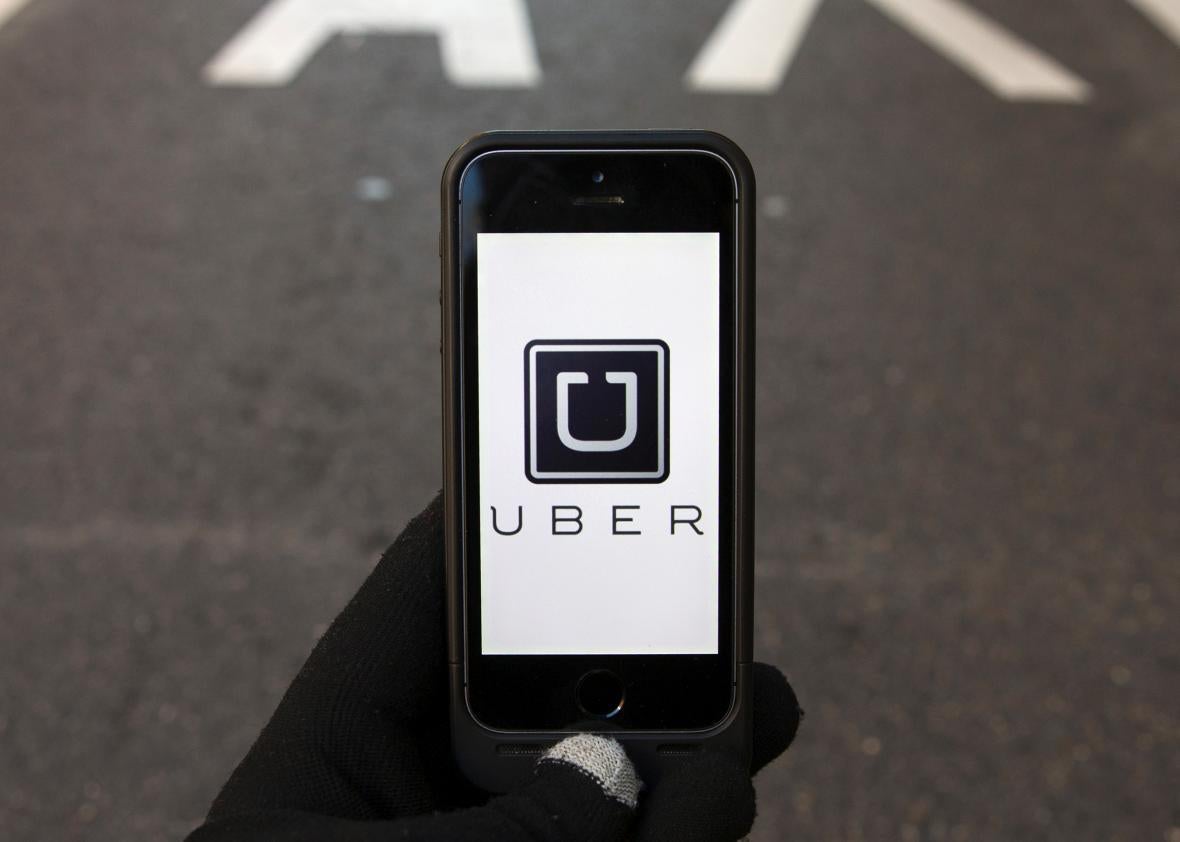On Tuesday, Uber hit a significant legal snag when a federal judge granted class-action status to a lawsuit over whether its drivers are independent contractors or employees. In his ruling, U.S. District Court Judge Edward Chen broadly dismissed Uber’s key argument against having the suit handled as a class action—that there “is no typical driver.” Chen has two major quibbles with Uber’s stance on this point. The first is kind of dry, which is that Uber conflates issues of typicality with commonality and predominance. The second is where Chen gets a bit more colorful. “As for the remainder of Uber’s argument,” he writes, “it fails because Uber focuses on legally irrelevant differences between the named Plaintiffs and class members.” For example: “the named Plaintiffs may all be left-handed and drive Hondas, while numerous class members are right-handed and drive Toyotas. But these differences do not demonstrate that the named Plaintiffs are not typical class representatives.”
So that’s the legal case for ignoring the “no typical driver” argument. But I’d like to suggest another way of looking at it—one that’s ironically best summed up by Uber’s own statements and marketing materials. Consider this excerpt from a blog post that Uber published on Tuesday shortly after Chen’s ruling came out:
… partners use Uber on their own terms, and there really is no typical driver—the key question at issue here. When asked in a survey earlier this year, most drivers said they love being their own boss. And it’s no wonder: Uber fits around their lives, not the other way around. Most drivers who use the Uber app already have full-time careers or part-time jobs. Many are students or retirees. About half of drivers in the U.S. work less than 10 hours per week. And, most drivers vary the number of hours they drive each week significantly.
Let’s break that down quickly. The first claim is familiar: There is no typical driver. But then something else: “most drivers.” Most drivers love being their own boss. Work full or part time. Are students or retirees. Work less than 10 hours per week. I don’t know about you, but to me that sounds a lot like a profile of the, er, typical person you might find driving for Uber. For another example of this, look no further than a blog post Uber published in early August: “The Top 10 Facts You May Not Know About Uber Driver Partners.” Once again, the post leads off with the assertion that there is no typical driver. But then it presents the following facts:
1) 87% of driver-partners said that a major reason they drive on the Uber platform is to be their own boss and set their own schedule.
2) 85% of driver-partners said that a major reason to work with Uber was to have more flexibility in their schedule and balance their work with life and family.
3) 73% of driver-partners say they would rather have a job where they choose their own schedule and are their own boss than a steady 9-5 job with some benefits and a set salary.
5) 50% of U.S. Uber driver-partners, on average, drive fewer than 10 hours a week.
Once again, you have this odd situation where Uber has decided to prove its assertion that there is no typical driver by listing the traits that unite most drivers. To me, it’s kind of weird. To Uber, on the other hand, it makes perfect sense. “These numbers show the tremendous diversity among our driver partners and how they use the Uber app to meet their unique needs and goals,” Jessica Santillo, a company representative, writes in response to this critique. “Of the pages of survey data available asking driver partners their preferences, how often they drive, and why they partner with Uber, you’ll notice one important number missing: 100 percent. That’s why no two drivers are alike.”
That’s all very nice, but last time I checked you didn’t need something to be true 100 percent of the time for it also to be typical. Like, if it’s typical for me to wear flannel shirts to work, I don’t need to wear flannel shirts 100 percent of the time for that to be true (though an all-flannel shirt dress code would be pretty great). I recognize that this isn’t a strictly legal argument, but it does seem worth pointing out that the main way Uber supports its case against a typical driver is by essentially painting a portrait of a typical driver. The hundreds of thousands of people driving on its platform clearly have a lot of differences. But they also have more in common—which Uber itself points out!—than the company would like us to believe.
